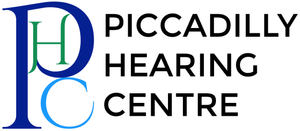
Our Services
Diagnostic Hearing Evaluation
A standard hearing evaluation involves obtaining an audiogram that contains thresholds for puretones between 250Hz and 8000Hz for each ear, and thresholds for speech reception or awareness and a determination of speech discrimination ability for each ear. Results are obtained in a sound booth using insert earphones or headphones for air conduction thresholds and a bone conduction oscillator placed on the mastoid for bone conduction thresholds. Live voice is standardly used for speech testing, but taped voice is used for some specialized speech testing including CAP testing. For young children, puretone results are obtained using play audiometry or Visual Response Audiometry and speech thresholds are obtained using a pointing to picture or body parts response, and sometimes results are obtained in the sound field using speakers rather than earphones. A measure of middle ear function is obtained using tympanometry and ipsilateral and contralateral acoustic reflexes are obtained to help diagnose site of lesion of hearing loss. Otoacoustic Emissions (OAE) Testing is used to help determine hearing levels for each ear when behavioural testing is not possible (e.g. infants and young children). Electrophysiological assessment can provide assessment of the integrity of the auditory nerve (BSER) and high level processing such as auditory cueing and visual scanning and tracking (P300 Response).
1. There is no cost for hearing evaluation of ages 6 and older
2. There is a nominal fee ($40) for hearing evaluation of children 5 and younger
3. There is a cost for CAP testing ($190 for initial test; $140 for re-evaluation)
4. There is a cost for P300 testing ($175 for initial test; $150 for re-evaluation)
5. There is no cost for Hearing Aid Evaluation or subsequent aided evaluations
6. There is a manufacturer cost for a hearing aid, and also for the dispensing of that hearing aid. The dispensing fee covers all in-office repairs, cleanings, and adjustments for the life of the hearing aid. There is a No-Risk 90 day return policy for all purchased aids. Most hearing aids have a 3-year repair warranty and a loss-and-damage policy. Out-of-warranty repairs costs are passed on to the client.
Note: Often, the cost of a young child’s hearing test or a school-aged child’s CAP or P300 test is covered by parent benefits. The provided medical receipt can be submitted to benefits or used as a medical expense on Income Taxes. The medical receipt for a hearing aid purchase can likewise be submitted. We also work with WSIB, VAC, ODSP, NHIB, Discretionary Benefits, and some private insurance plans.
